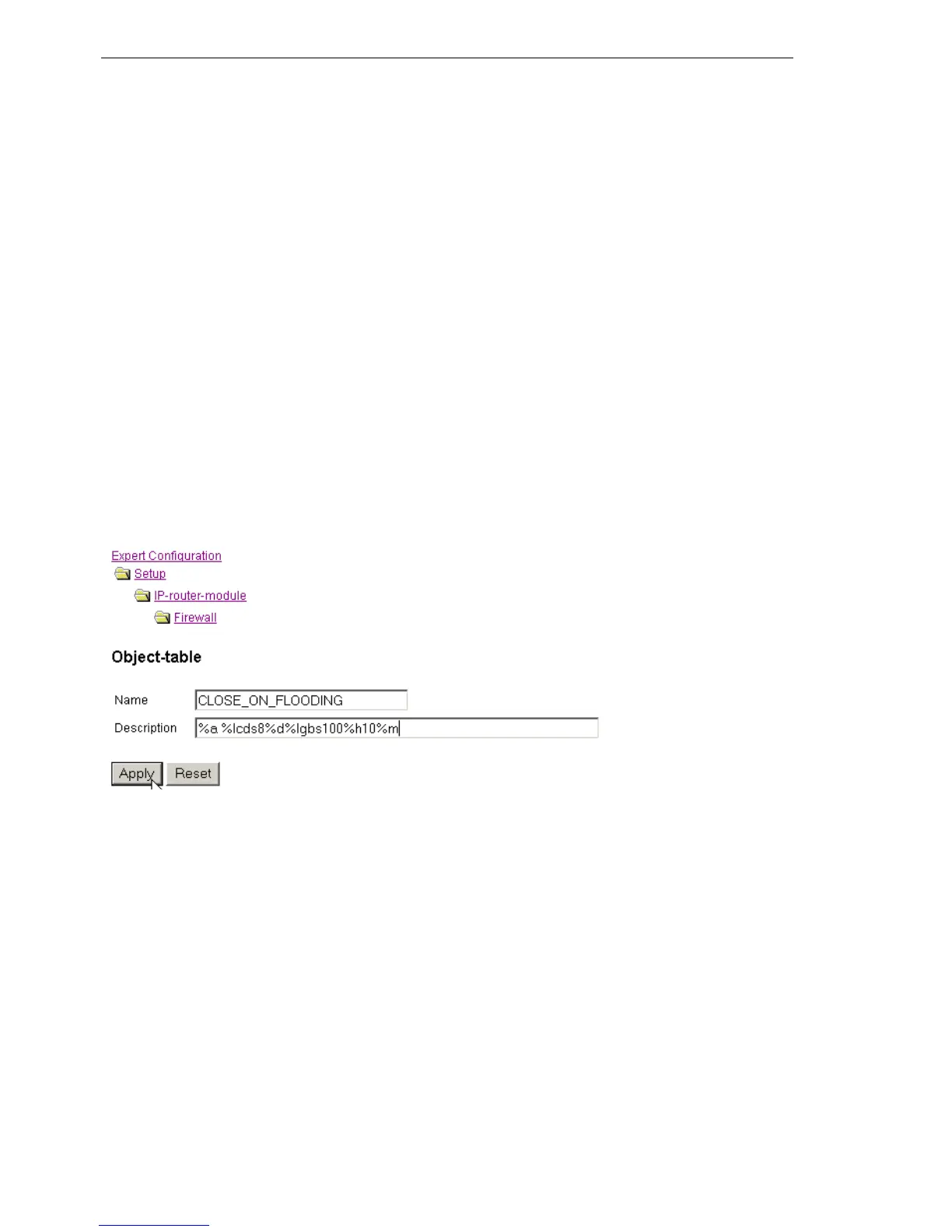Firewall
294
8.3
The BAT Firewall
BAT54-Rail/F..
Release
7.54
06/08
If the "close port" action is executed, an entry in a block list is made, by
which all packets, which are sent at the respective computer and port,
get rejected. For the "close port" object a timeout can be given in sec-
onds, minutes or hours, which is inserted directly behind the object ID.
This time value is composed of the designator of the time unit (h, m, s for
hour, minute and second), and the actual time. Thus e.g. %pm10 closes
a port for 10 minutes. If no time unit is provided, then implicitly "minutes"
apply (and thus %p10 is equivalent to %pm10).
If the "Deny host" action is executed, then the sender of the packet is
registered in a block list. Starting from this moment, all packets received
from the blocked server will be rejected. Also the "Deny host" object can
be provided with a time-out, which is formed similarly to the "CLOSE
port" option.
If you want to limit e.g. the permissible data rate for a connection to 8 kbps
and to lock out the aggressor committing a flooding attempt, and furthermore
send at the same time an email to the administrator, then the description of
the object for the action reads as follows:
D This description permits traffic (
%a
) at the beginning. A simple %a at the
beginning of the description is equivalent to a %lp0%a (= accept, if the
limit was exceeded on zero packets, i.e. with the first packet).
D If over the current connection now 8 kbit (
%lcds8
) is transferred in one sec-
ond, then all further packets - up to the expiration of the second - will be
silently discarded (
%d
), thus automatically creating a Traffic Shaping.
D If 100 packets for the server (destination address of the connection) arrive
(
%lgbs100
) in one second, then the remote host (source address) is locked
for 10 minutes (
%h10
), and an email is sent to the administrator (
%m
) .
Similar to the address and service objects of the object table, action objects
can be provided with a name, and can arbitrarily be combined recursively,
whereby the maximum recursion depth is limited to 16. In addition, they can
be entered directly into the action field of the rule table.

